How to Disable Apple Software Updates Notifications?

(updated)
Get Free Scanner and check your computer for errors
Fix It NowTo fix found issues, you have to purchase the full version of Combo Cleaner. Free trial available. Combo Cleaner is owned and operated by Rcs Lt, the parent company of PCRisk.com read more.
How to Disable Apple Software Updates Notifications on Mac and Windows Computers?
Notifications about available updates might become annoying, especially when the longest period you can delay them is one day. So, if nothing changes in a day, users receive notifications needlessly. Reminders for different time intervals say weekly, might be preferable.

In addition, daily notifications regarding apps that are little used can be annoying since you may not necessarily want to delete them, despite the low usage of the software. Many people report this situation on various forums, stating that they could not find ways to disable or delay these annoying notifications for longer than one day.
Fortunately, there are several methods on Mac computers to turn off App Store notifications. Windows operating system users can set an option to disable them. These methods can sometimes seem confusing, so they are covered in this article for clarity and ease of use.
Video showing How to Disable Apple Software Notifications on Mac?
Table of Contents:
- Introduction
- Close and turn off App Store's notifications on Mac
- Disable Software update notifications permanently on Mac
- An alternative method to disable notifications
- Disable upgrade to High Sierra notifications
- Disable Apple Software Update notifications on Windows PC
- Video showing How to Disable Apple Software Notifications on Mac?
Download Computer Malware Repair Tool
It is recommended to run a free scan with Combo Cleaner - a tool to detect viruses and malware on your device. You will need to purchase the full version to remove infections. Free trial available. Combo Cleaner is owned and operated by Rcs Lt, the parent company of PCRisk.com read more.
Close and turn off App Store notifications on the Mac
To temporarily turn off notifications, first, simply swipe right - the notification will disappear for several hours. Repeat this twice within a day, and you will not see the same notification that day. The same reminder will pop up the next day (this, however, might be useful if you were busy during the first occurrence).
If you wish to determine when reminders should return, click Later and then select your preferred option from the list.
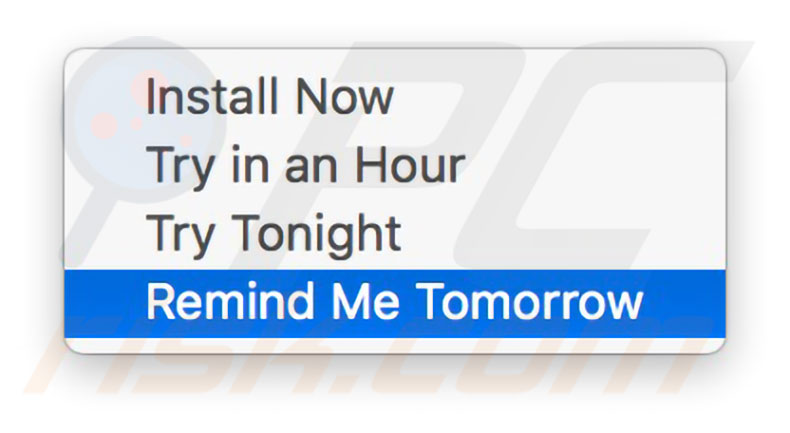
Another temporary but more useful and functional option is to enable the Do Not Disturb option. When this mode is enabled, no notifications are displayed unless you change the preferences (you can choose applications that are permitted to deliver notifications).
1. To enable the Do Not Disturb environment, first click on the menu bar icon at the top right corner of the screen to open the Notifications center.
2. Then scroll up to the option to enable or disable this mode.
Alternatively, open System Preferences, open the Notifications pane, and choose to enable or disable Do Not Disturb.
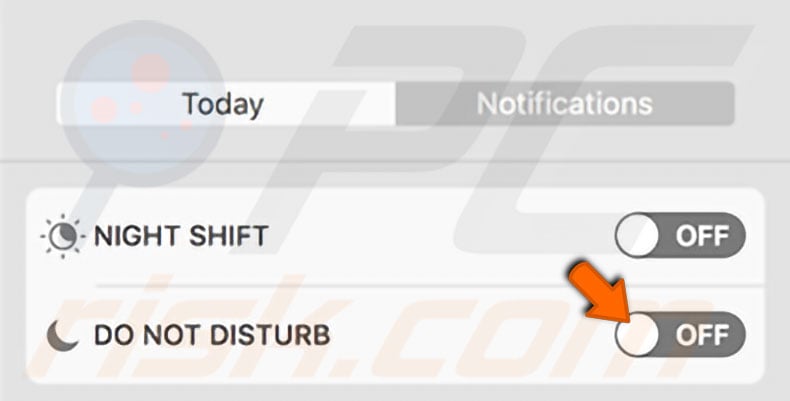
Unfortunately, you must repeat this procedure each time you reboot your computer. Many people use this feature at work to reduce the chances of possible distractions. You can choose the time when this mode is automatically enabled and turned off. However, you cannot set multiple times (only one period is available).
1. To set the Do Not Disturb mode schedule, go to Mac System Preferences, choose the Notifications pane, and select Do Not Disturb from the list on the left side of the new window.
2. Here, you may choose the time at which this mode should be enabled and disabled and set which type of notifications should be permitted and other conditions relating to when this useful mode should be enabled.
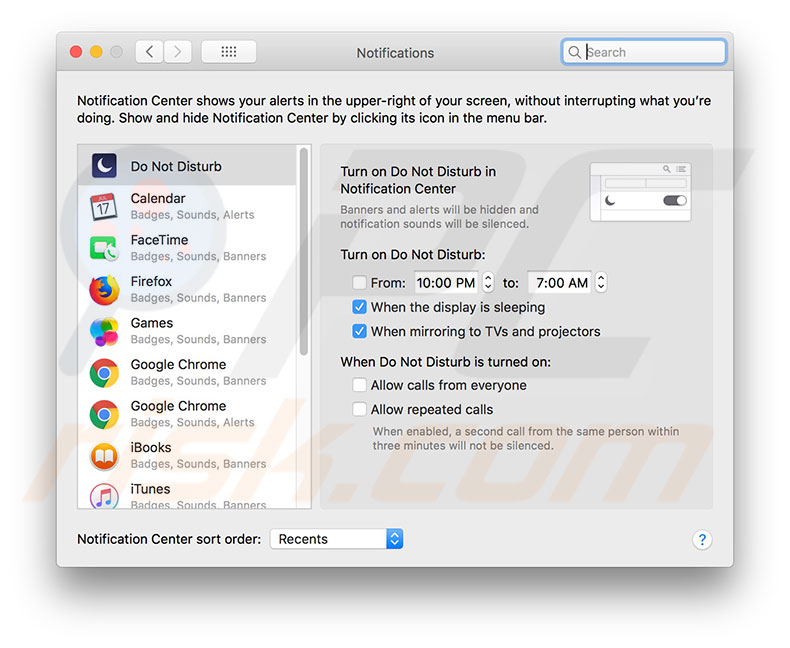
Disable Software update notifications permanently on Mac
This method will allow you to disable all notifications regarding software updates; however, when you wish to update applications, you must manually search and install updates.
1. To permanently disable notifications about available updates, open the App Store application, click on App Store in the menu bar at the top of your screen, and then select Preferences.
Alternatively, open your Mac System Preferences and choose the App Store pane.
2. In the new window, remove the checkmark from the box beside 'Automatically check for updates'.
3. You can also choose to allow the computer to download and install (or just download) updates in the background by enabling the checkboxes beside the options below.
If you allow all installation options, you will not see any notifications about new updates available. However, remember that some updates require a computer restart (and if you allow the Mac to have this control, unexpected restarts might result in loss of data or your work in open files).
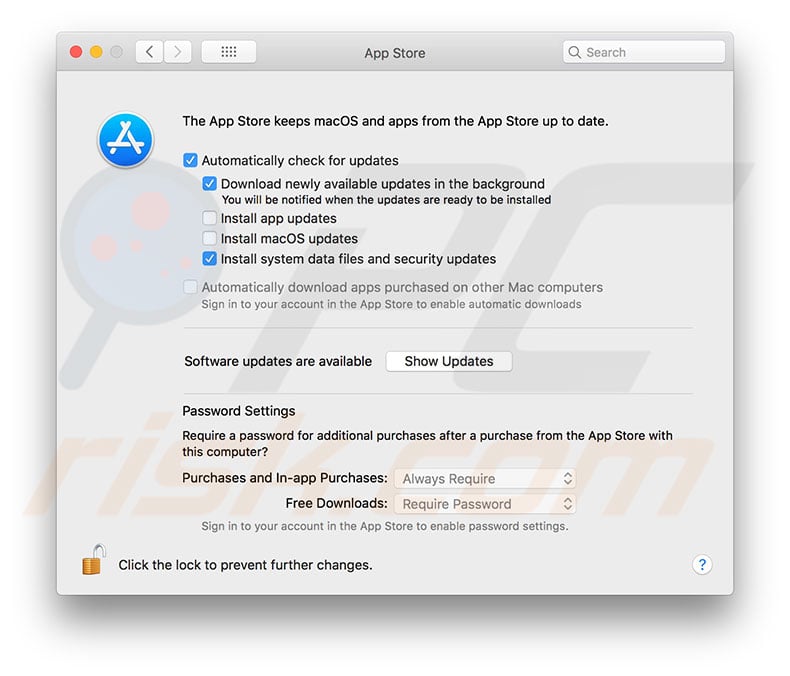
Alternative method to disable notifications
An alternative method is to open a built-in Mac command line application called Terminal.
1. Use Spotlight by pressing the keyboard shortcut of Command and Spacebar, type Terminal, and then press Return. The Terminal application can also be launched through Finder - simply go to the Applications folder and choose Utilities. Here, you will find Terminal.
2. Once the Terminal app has launched, type or copy-paste the following command:
sudo defaults write /Library/Preferences/com.apple.SoftwareUpdate AutomaticDownload -boolean FALSE
3. Enter the above command and press Return on the keyboard.
4. The Terminal will ask you to confirm the action by entering the administrator's account password.
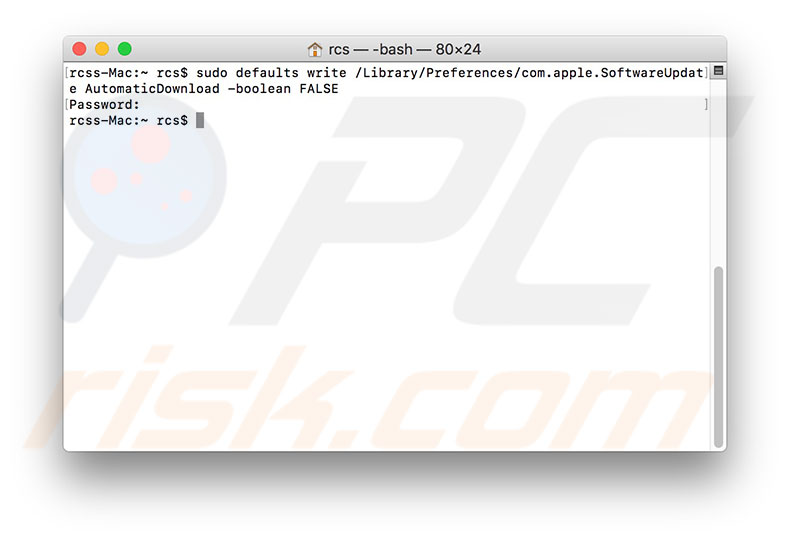
Disable upgrade to High Sierra notifications
These notifications are a real problem for users of earlier models of Mac computers. You may require minor operating system updates (so you do not wish to disable all notifications) but seek to prevent your computer from upgrading to maintain the best performance.
Furthermore, this particular notification can seem troublesome when refused since there are no options to 'remind me tomorrow', 'try later', or similar. Fortunately, you can disable this reminder to upgrade your operating system.
1. First, open the Mac App Store and select the Updates tab at the top of the window.
2. Under the Update tab, you should see a large banner at the top of the page announcing the new version of the Mac operating system. Right-click or hold down the Control key, click anywhere on the image and select the Hide update option.

This should be enough to stop notifications relating to system upgrades. However, there is another more effective method to disable these annoying notifications.
1. First, open Finder and click on Go in the menu bar at the top of your screen.
2. Then select the Go To Folder option and type the following path /Library/Bundles into the destination field of a new dialogue window.
3. Then, click Go, and you should find a file titled OSXNotification.bundle.
4. Delete or move this particular file to a different location on the computer (to perform this action, you will be prompted to confirm with a computer administrator account password).
5. Once you have moved this file, restart the Mac. When the computer boots, the notifications should be gone.
Disable Apple Software Update notifications on Windows PC
This method covers the latest versions of the Windows operating system (for Windows 10, 8, 7, or Vista).
1. To start, click on the Start menu icon to expand the menu. Type Task Scheduler and press Enter in the search field, or double click on the program from the list.
2. In the left sidebar of the Task Scheduler window, expand the Task Scheduler Library folder by clicking the arrow, or simply double-click the title.
3. Then, expand the Apple folder in the same way and right-click on AppleSoftwareUpdate in the main list.
4. In the popped-up menu, select Disable or Delete. From this point, notifications about Apple software updates will not appear.
If you are still using Windows XP, follow this guide to disable reminders about Apple software updates:
1. First, click the start menu button to expand the menu, and then select Programs.
2. Open Accessories and go to System Tools. Open the Scheduled Tasks.
3. Right-click on AppleSoftwareUpdate and click delete.
This will stop all notifications relating to Apple software updates.
Share:

Karolina Peistariene
Author of how-to guides for Mac users
Responsible for collecting, analyzing, and presenting problem-solving solution articles related to macOS issues. Years of macOS experience combined with solid research and analyzing skills help Karolina provide readers with working and helpful solutions as well as introduce various features Mac has to offer.
▼ Show Discussion